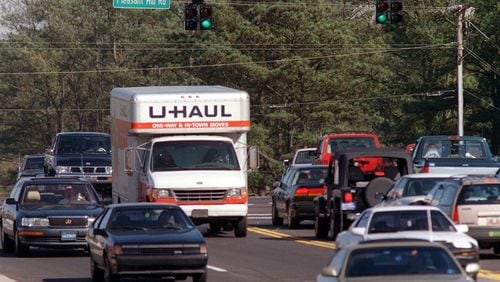Like most nonfatal lightning strikes, the one outside the Aventura Mall in Florida was not a direct hit. The bolt of electricity struck the victim’s umbrella, entered through his hand and left through his foot.
“The gentleman holding the umbrella sustained significant electrical injuries, but his outcome was very good,” said Dr. Randy Katz, medical director of emergency services at Memorial Regional Hospital in Hollywood, who has treated about half a dozen lightning victims.
“It’s very uncommon to see an entrance and an exit. In this case he actually had an exit through his shoe, so his shoe was torn open at the bottom.”
Quick action by medical personnel prevented the victim from dying of cardiac arrest before he reached the hospital, Katz said.
Such improved medical care, and more awareness of the dangers of lightning, has contributed to a record low number of U.S. lightning deaths in 2017.
>> Video captured by mom shows lightning bolt that nearly killed her son
Lightning killed 16 people in the nation last year, far below the previous record low of 23 and well short of the 100-plus fatalities that were routine in the 1960s, according to the National Weather Service. The total includes five deaths in Florida, the perennial leader in U.S. lightning fatalities, which receives more lightning strikes per square mile than any other state. But Florida also has stricter lightning safety policies, mirroring those taking effect across the country.
“If you go back 40 years or so, people would just simply hear the thunder and say, ‘Oh, I think the storm is some distance away,’” said John Jensenius, lightning safety specialist for the National Weather Service. “What they didn’t realize was that if you could hear thunder, you’re in striking distance of the storm. Lightning can strike outward 10 miles from a storm, which about the distance that you can hear thunder.”
Florida school systems have installed lightning detectors and imposed strict safety policies. After lightning killed a student during a football game at Monarch High School in Coconut Creek in 2005, the Broward County School District adopted the WeatherBug monitoring system, which issues warnings of nearby thunderstorms.
“If we have any alerts that go off, the athletes or the band or anyone else that’s out there practicing or competing immediately need to go inside,” said Shawn Cerra, athletics director for the Broward school district, who has worked in the school system for 24 years.
“If there was a policy in place decades ago, it was really loose,” he said. “Not so much today. We’re pretty safety-conscious. I can remember back a couple decades when lightning would be cracking around us and then we’d be going in, but we wouldn’t detect it when it was five, eight, 10 miles away.”
With Florida’s stormy summers, the state averages nearly 21 lightning strikes per square mile per year, followed by Louisiana with 18 and Mississippi with 16.4, according to the monitoring company Vaisala, which produces data used by the National Weather Service. This high density of strikes helps account for the state’s leading position for fatalities.
>> 150 lightning strikes spark wildfires at Glacier National Park
“It’s that combination of lightning and outdoor activities which make people vulnerable to a lightning strike,” Jensenius said. “In terms of lightning, Florida has the most lightning per square mile of any state in the U.S. and also a sizable population. In addition, Florida has many outdoor recreational activities that cause people to be vulnerable to a lightning strike. Finally, in Florida, lightning is a very common afternoon threat for those who work outside or are outside as part of their daily routine.”
Since 2000 there have been nine deaths and 47 injuries from lightning in Broward County, seven deaths and 38 injuries in Miami-Dade County and six deaths and 29 injuries in Palm Beach County, according to the National Climate Data Center.
Florida’s lightning deaths last year included a construction worker killed June 27 while working on the Pembroke Pines City Center project. Another construction worker was killed by lightning last May in Jensen Beach.
But leisure activities account for the largest number of fatalities. Leading the list is fishing, followed by beach activities, camping and boating, according to a 10-year analysis of lightning deaths nationwide by the National Weather Service. Of sporting activities, the leader was soccer, followed by golf.
Even when lightning doesn’t kill, it can cause serious, permanent injuries, including neurological problems such as distractibility, irritability, changes in personality, headaches, balance problems and difficulty sleeping. Pain is common.
“When lightning goes through a person, it’s following either the cardiovascular or the nervous system, and in the nervous system those tiny little nerve endings, which are used to transmitting tiny little impulses of energy, get completely overwhelmed by the amount of energy in a lightning strike,” Jensenius said. “The end result of that tremendous amount of energy is that the person is left in pain, and that pain can persist for a lifetime.”
Dr. Craig Harrison, emergency medical physician at Broward Health Medical Center, said there has been improvement in medical care immediately after a lightning strike because of wider CPR training and the increased availability of defibrillators, which can restore a normal heartbeat.
“We probably have better medical care in the field from first-responders and bystanders,” he said. “When you get those things started, you can often bring people back who may have lost their heartbeat or their ability to breathe, during those first few critical moments. When you look back to the 1940s, on average there were about 300 people dying every year from lightning. Now we’re below 30, and certainly this last year dropped a lot more.”





